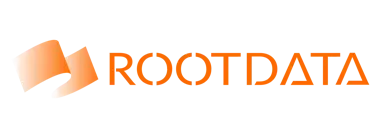Programmable regulation is the missing key to DeFi’s legal future
Cointelegraph
Jul 15, 2025 23:00:00


Opinion by: Raks Sondhi, chief operating officer of Freedx
Governing composable, borderless and programmable ecosystems with rules made for simple, static financial systems presents a fundamental challenge.
In the past year alone, decentralized finance (DeFi) platforms held over $60 billion worth of crypto assets locked in their protocols. Yet most jurisdictions still lack a clear definition of a decentralized autonomous organization (DAO). This confusion is slowing innovation and undermining the credibility of regulatory institutions.
Lawmakers still assume there is a centralized actor to license, audit or subpoena. However, DAOs are intentionally decentralized, smart contracts operate autonomously and onchain assets can move without permission.
Although US regulators have started targeting protocols under existing securities laws, courts struggle to determine if autonomous software can be held liable. Legacy regulatory tools were not designed to oversee systems that evolve in real-time. These challenges have led regulators worldwide to attempt new crypto regulation approaches.
On a global scale, the Markets in Crypto-Assets (MiCA) is attempting to provide a unified framework for regulation in the EU, going as far as restricting the use of tokens like Tether’s USDt that do not comply with its standards. In the US, the SEC and Commodity Futures Trading Commission have brought legal action against DAO participants and DeFi protocols. Some US states, like Wyoming, have even passed laws to give DAOs a kind of corporate status.
Yet these efforts seem deeply limited and rely heavily on retroactive enforcement, which results in a chilling effect where builders hesitate to move forward, capital sits idle, and regulations are in a cat-and-mouse chase that benefits no one or doesn’t solve the actual problem. They are slowly patching holes in a highly dynamic and evolving space.
Governing software through embedded compliance
How do we stop chasing? The answer lies in some sort of policy-as-code solution. Instead of trying to fit decentralized technologies into traditional legal systems, we need a new policy infrastructure that is as composable and programmable as the technologies it needs to oversee. We must build compliance layers directly into the code and embed regulatory logic inside the DeFi protocols’ infrastructure.
Just as financial instruments onchain are now composed of interoperable modules, a lending protocol should be able to plug in specific compliance modules to fit their jurisdictional needs. A DAO treasury should be able to self-report tax events as they occur. A stablecoin protocol should be able to enforce sanctions lists through zero-knowledge proofs or onchain attestations, and so on.
Some projects are already developing components for privacy-preserving and onchain compliance. Other projects are building permissioned architectures to align with regulatory demands. Even centralized exchanges are exploring onchain compliance rails that could apply to decentralized protocols.
Legal clarity is the key to DeFi’s full potential
From a market standpoint, embedded compliance has the potential to de-risk DeFi, attracting new investors and users alike. Legal clarity from embedding policy directly into the infrastructure would reduce the enforcement gap and enhance consumer protections.
For developers, it unlocks the composability of regulatory regimes, allowing them to select from jurisdictional templates like they do UI components, adapting their codebase in real time to meet evolving policy. No more guessing whether your DAO token is a security, no more wondering if a protocol is subject to reporting requirements, and less reliance on costly legal interpretation.
Although policy-as-code sounds very advantageous, the programmable policy has its own risks. As with any other connected environment, code can be exploited. We must wonder what would happen when a compliance module is compromised, malfunctions or becomes outdated. Governance, security and upgradability remain essential, but democratic oversight is a pillar of blockchain technology. Embedding regulation in code must not mean removing it from public accountability, as that will decrease trust and transparency, further pushing the Web3 space from mainstream adoption.
We are at a crossroads, either reimagining the intersection between DeFi and law or allowing the gap between regulation and permissionless innovation to widen. One path leads to inclusive, efficient, transparent finance governed by rules everyone can see and understand.
The other path leads to gray markets, enforcement chaos and capital flight.
Policy must modularly evolve and adapt to new structures, logic and ecosystems. The key to unlocking that is to govern software with software.
Opinion by: Raks Sondhi, chief operating officer of Freedx.
This article is for general information purposes and is not intended to be and should not be taken as legal or investment advice. The views, thoughts, and opinions expressed here are the author’s alone and do not necessarily reflect or represent the views and opinions of Cointelegraph.
Latest News
NewsBTC
Jul 16, 2025 07:00:03
NewsBTC
Jul 16, 2025 06:00:54
CoinMarketCal
Jul 16, 2025 06:00:16
CoinMarketCal
Jul 16, 2025 06:00:16
CoinMarketCal
Jul 16, 2025 06:00:16







